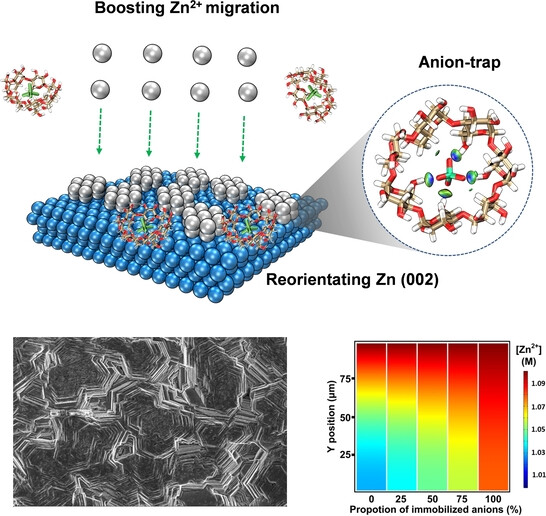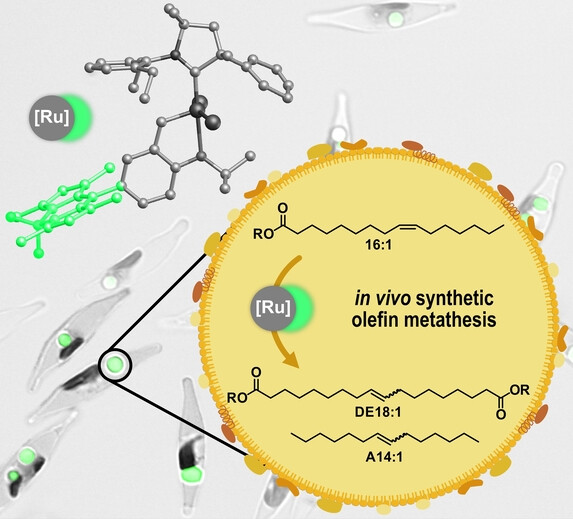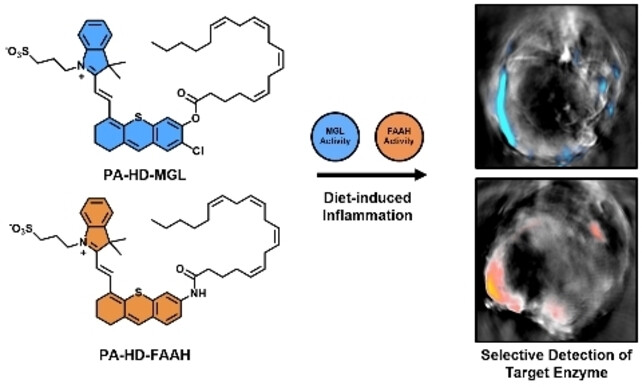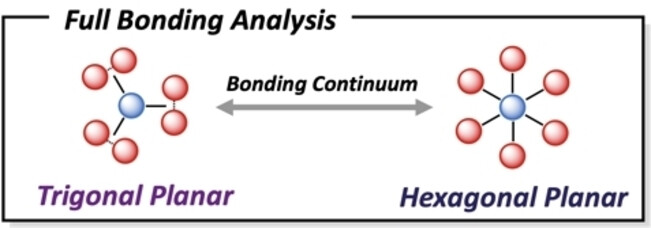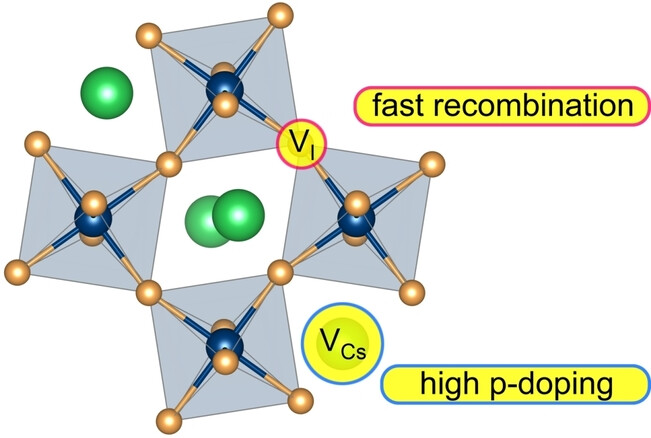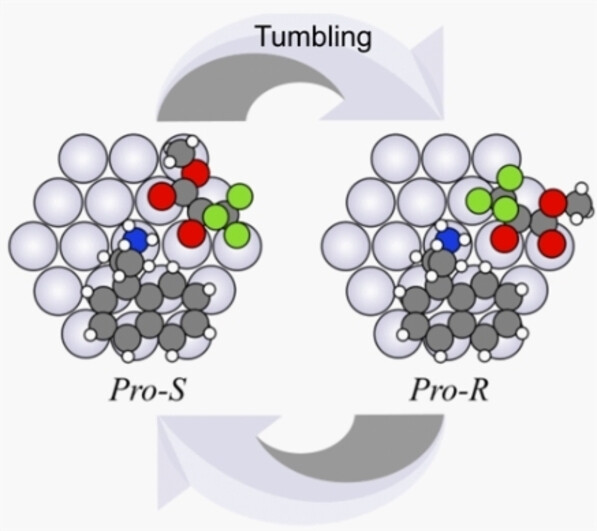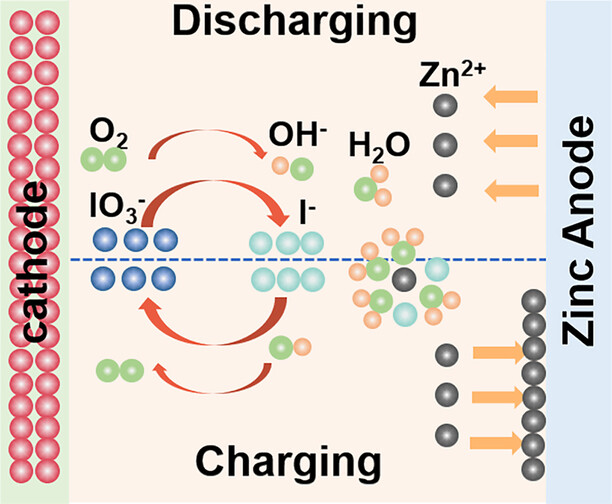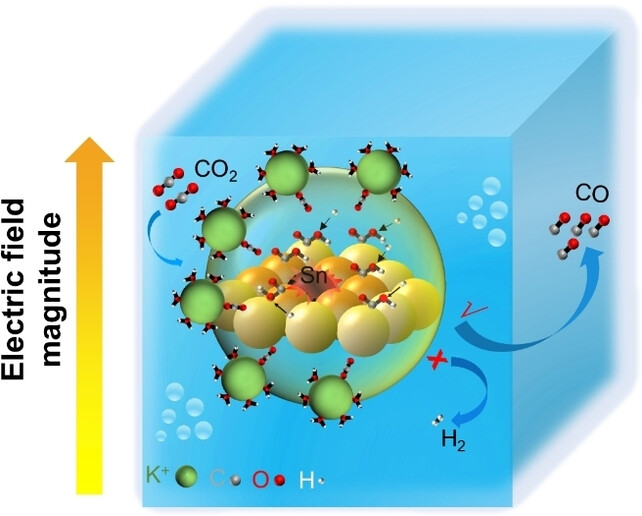Journal list menu
Export Citations
Download PDFs
Cover Pictures
Cover Picture: Enantioselective [2+2] Cycloaddition of Allenyl Imide with Mono- or Disubstituted Alkenes (Angew. Chem. Int. Ed. 44/2022)
- First Published: 25 October 2022
![Cover Picture: Enantioselective [2+2] Cycloaddition of Allenyl Imide with Mono- or Disubstituted Alkenes (Angew. Chem. Int. Ed. 44/2022) Volume 61 Issue 44, 2022](/cms/asset/82164b9e-78a5-41fe-a97f-6cf6c3f2ff08/anie202214306-toc-0001-m.jpg)
A chiral Lewis acid catalysed asymmetric [2+2] cycloaddition reaction of allenyl imide and alkenes was developed by Xiaohua Liu, Xiaoming Feng et al. in their Research Article (e202211596). This protocol provided a series of axially chiral cyclobutenes in high yields with excellent enantioselectivities. A stepwise mechanism was proposed based on experimental studies and DFT calculations, and π–π stacking interactions were identified as crucial for the enantioselectivity.
Inside Cover: Anion-Trap Engineering toward Remarkable Crystallographic Reorientation and Efficient Cation Migration of Zn Ion Batteries (Angew. Chem. Int. Ed. 44/2022)
- First Published: 25 October 2022
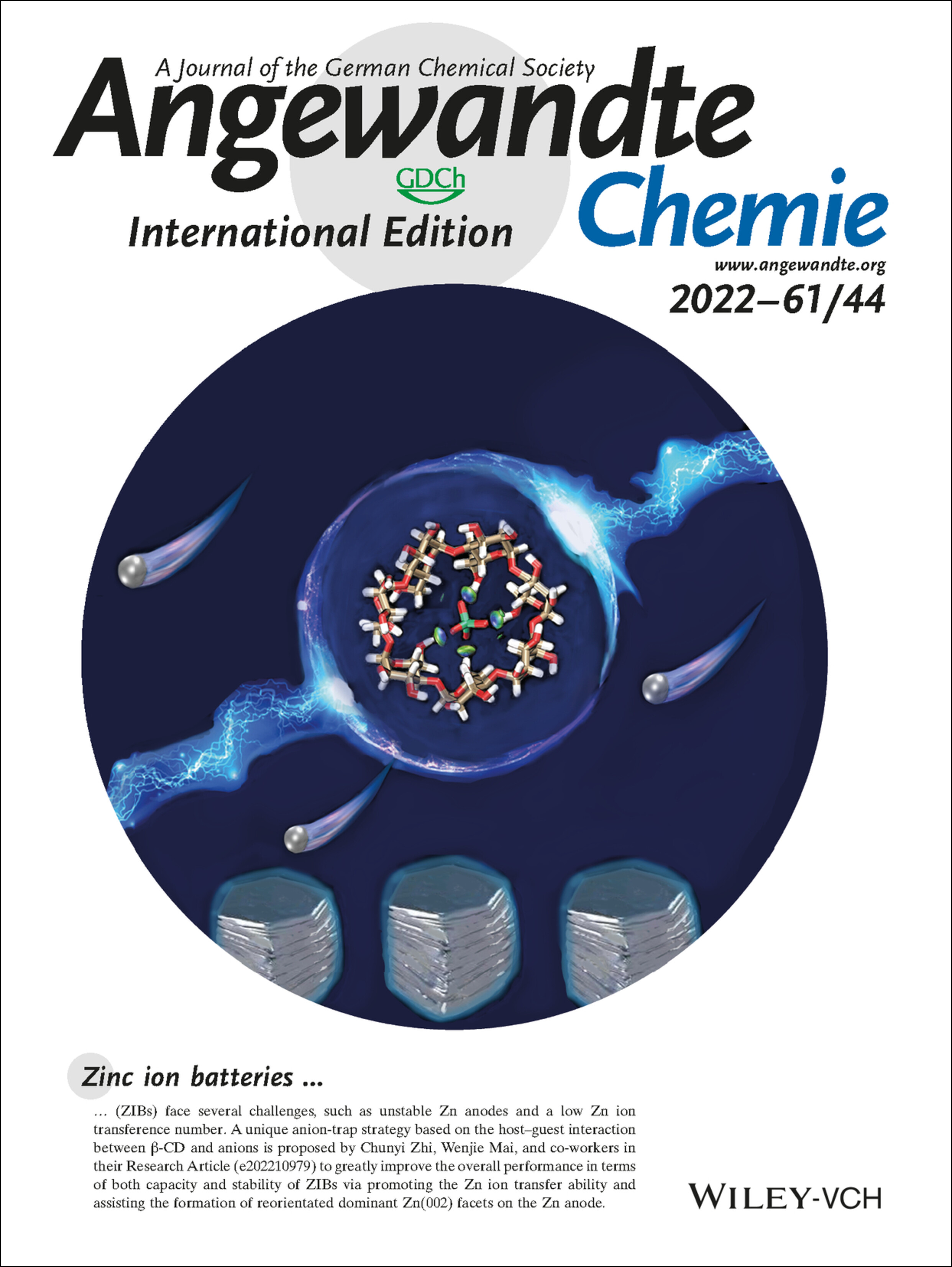
Zinc ion batteries (ZIBs) face several challenges, such as unstable Zn anodes and a low Zn ion transference number. A unique anion-trap strategy based on the host–guest interaction between β-CD and anions is proposed by Chunyi Zhi, Wenjie Mai, and co-workers in their Research Article (e202210979) to greatly improve the overall performance in terms of both capacity and stability of ZIBs via promoting the Zn ion transfer ability and assisting the formation of reorientated dominant Zn(002) facets on the Zn anode.
Inside Back Cover: Multistate Circularly Polarized Luminescence Switching through Stimuli-Induced Co-Conformation Regulations of Pyrene-Functionalized Topologically Chiral [2]Catenane (Angew. Chem. Int. Ed. 44/2022)
- First Published: 06 October 2022
![Inside Back Cover: Multistate Circularly Polarized Luminescence Switching through Stimuli-Induced Co-Conformation Regulations of Pyrene-Functionalized Topologically Chiral [2]Catenane (Angew. Chem. Int. Ed. 44/2022) Volume 61 Issue 44, 2022](/cms/asset/9c4981d7-bdfb-42ab-840e-ac02b399429f/anie202214234-toc-0001-m.jpg)
The precise co-conformation regulation of topologically chiral [2]catenanes under two different external stimuli led to the construction of a bidirectional circularly polarized luminescence (CPL) switch, as reported by Xiao He, Wei Wang, Hai-Bo Yang, and co-workers in their Research Article (e202210542). The results provide not only an attractive approach towards the construction of multistate CPL switches for practical uses but also a promising platform for the construction of novel chiral materials.
Back Cover: Single-Product Faradaic Efficiency for Electrocatalytic of CO2 to CO at Current Density Larger than 1.2 A cm−2 in Neutral Aqueous Solution by a Single-Atom Nanozyme (Angew. Chem. Int. Ed. 44/2022)
- First Published: 18 October 2022
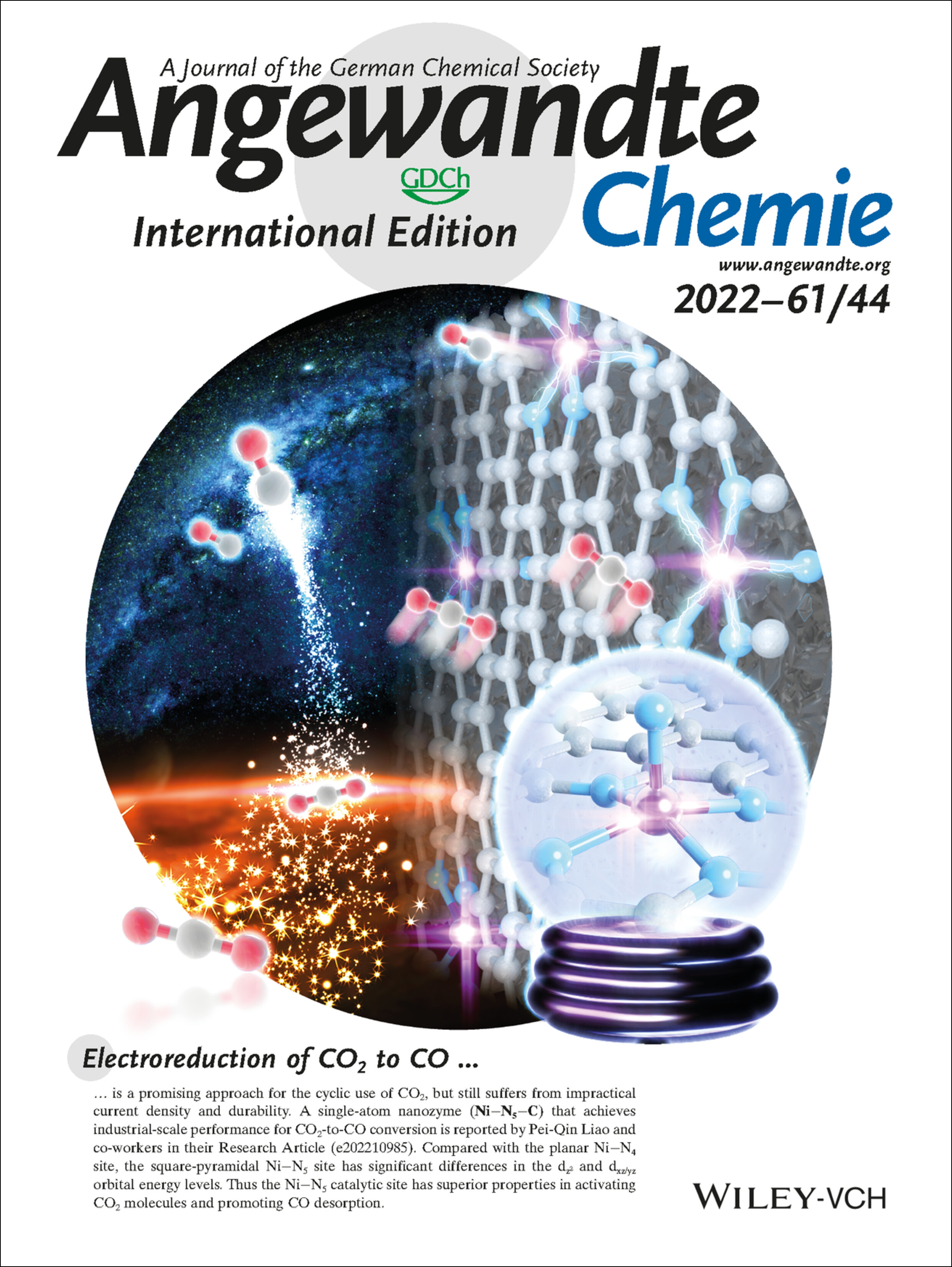
Electroreduction of CO2 to CO is a promising approach for the cyclic use of CO2, but still suffers from impractical current density and durability. A single-atom nanozyme (Ni−N5−C) that achieves industrial-scale performance for CO2-to-CO conversion is reported by Pei-Qin Liao and co-workers in their Research Article (e202210985). Compared with the planar Ni−N4 site, the square-pyramidal Ni−N5 site has significant differences in the dz² and dxz/yz orbital energy levels. Thus the Ni−N5 catalytic site has superior properties in activating CO2 molecules and promoting CO desorption.
Frontispiece
Frontispiece: Azulene-Fused Acenes
- First Published: 25 October 2022
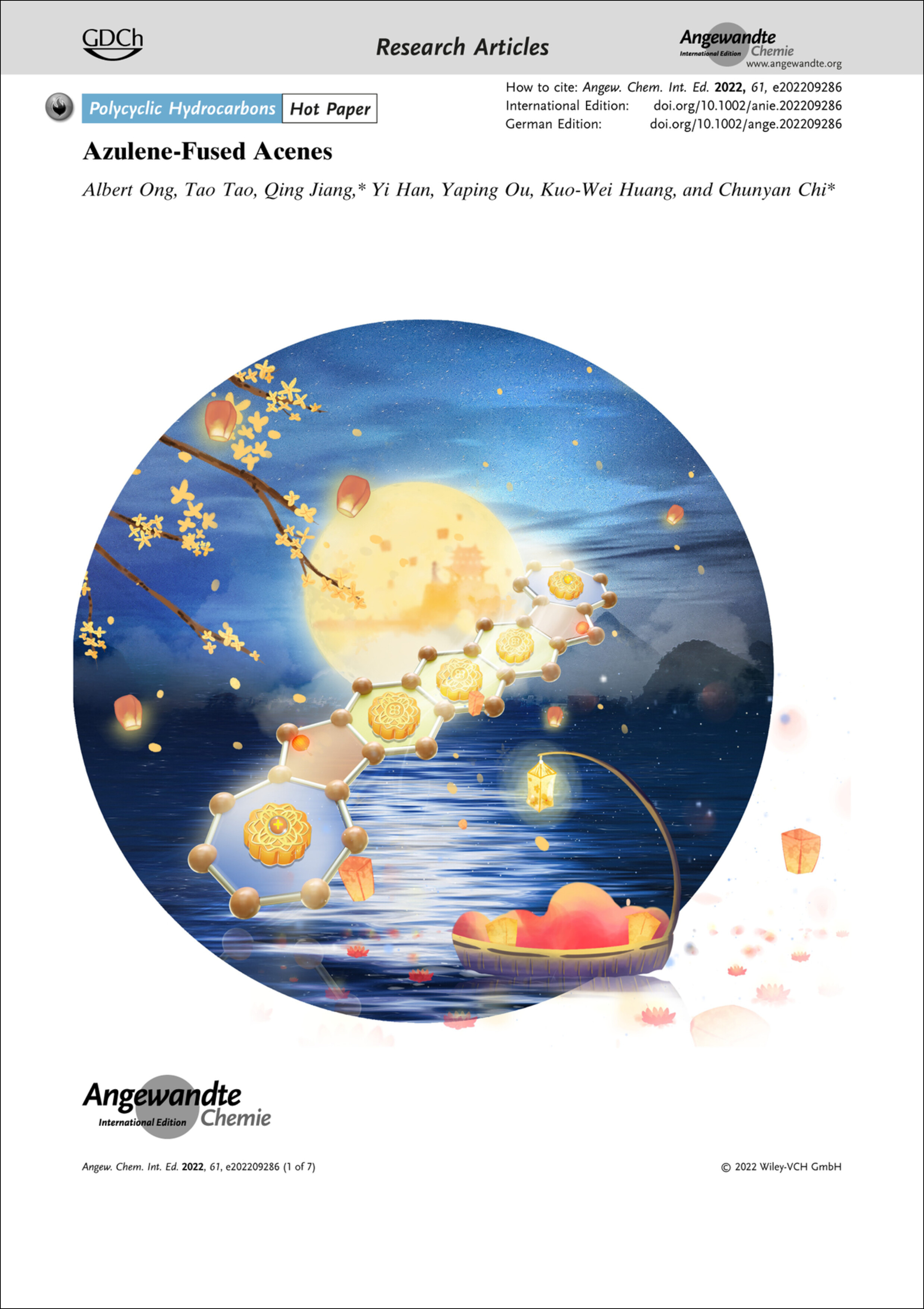
Acenes. Azulene-fused acenes are described in the Research Article (e202209286) by Qing Jiang, Chunyan Chi et al. Their dications display a local aromaticity shift, and one of them exhibits open-shell diradical character.
Graphical Abstract
Introducing …
Minireviews
Annulenes
Polycyclic Hydrocarbons from [4n]Annulenes: Correlation versus Hybridization Forces in the Formation of Diradicaloids
- First Published: 20 August 2022
![Polycyclic Hydrocarbons from [4n]Annulenes: Correlation versus Hybridization Forces in the Formation of Diradicaloids](/cms/asset/fe94e64c-02ae-455d-92c9-3f88956cd06c/anie202209138-toc-0001-m.jpg)
A conceptual electronic structure trip from [4n] Hückel antiaromatics to diradicaloids and to more hierarchical complex molecular shapes made by internal covalent hybridization of the peripheral [4n] π-electron circuit is described. Focus is on the underlying physical organic chemistry implications.
Metal-Organic Frameworks
Morphological Anisotropy in Metal–Organic Framework Micro/Nanostructures
- First Published: 14 August 2022
Reviews
Chemometrics
Big (Bio)Chemical Data Mining Using Chemometric Methods: A Need for Chemists
- First Published: 23 March 2018
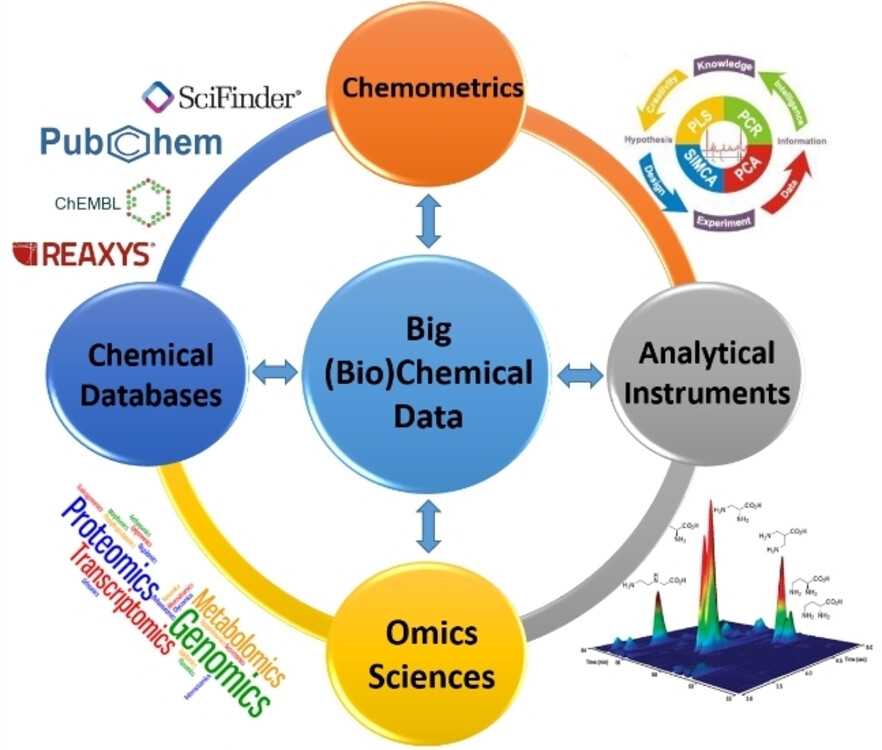
Big (Bio)Chemical Data Mining: Large and complex chemical data sets generated by modern analytical technologies have led to the so-called Big (Bio)Chemical Data era. These data sets can be produced using modern analytical instruments such as multi-dimensional chromatography, high-resolution and multi-dimensional spectroscopy, hyperspectral imaging and DNA/RNA microarrays. Chemometric methods have shown potential to analyze BBCD especially in omics sciences and chemical toxicology/drug discovery.
CO2 Reduction
Molecular Engineering of Metal Complexes for Electrocatalytic Carbon Dioxide Reduction: From Adjustment of Intrinsic Activity to Molecular Immobilization
- First Published: 22 July 2022
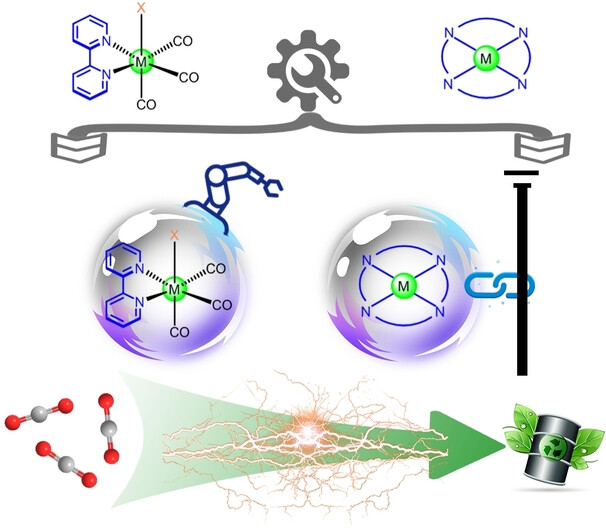
This Review focuses on molecular catalysts for the electrocatalytic CO2 reduction reaction (ECO2RR) including metal bipyridines and macrocycle complexes, and summarizes the molecular engineering strategies developed to regulate the intrinsic catalytic efficiency and modify the electrode. Guidelines are provided for the rational design of ECO2RR catalytic systems.
C−H Functionalization
Regioselective Transition-Metal-Free C(sp2)−H Borylation: A Subject of Practical and Ongoing Interest in Synthetic Organic Chemistry
- First Published: 09 August 2022

Recent developments in strategies for transition-metal-free regioselective C−H borylation are summarized in this Review. Strategies developed to control the regioselectivity of the electrophilic borylation, such as approaches controlled by electronic effects, auxiliaries, and steric factors, are also discussed. EDG=electron donating group, DG=directing group, TM=transition metal.
Research Articles
Polycyclic Hydrocarbons | Hot Paper
Nickel Catalysis
Photo-Excited Nickel-Catalyzed Silyl-Radical-Mediated Direct Activation of Carbamoyl Chlorides To Access (Hetero)aryl Carbamides
- First Published: 05 August 2022

Photoexcited nickel catalysis enabled silyl-radical-mediated activation of carbamoyl chlorides. This process provides an operationally simple and widely applicable amidation reaction of a plethora of aryl and heteroaryl halides. Mechanistic understanding suggests that the reaction involves an energy-transfer mechanism for aryl bromide; while a single-electron-transfer mechanism is operating for aryl chlorides.
Sulfonimidoyl Fluorides
The Linkage of Sulfonimidoyl Fluorides and Unactivated Alkenes via Hydrosulfonimidoylation
- First Published: 14 September 2022
Organocatalysis
Oxidative Radical NHC Catalysis: Divergent Difunctionalization of Olefins through Intermolecular Hydrogen Atom Transfer
- First Published: 09 September 2022

An unprecedented oxidative radical NHC catalytic system is reported that allows an efficient difunctionalization of olefins for the divergent synthesis of various ketones. Key to success is the use of peroxyesters as “dual-role” reagents to achieve a sequential single-electron oxidation and intermolecular hydron atom transfer.
Ionic Crystals | Very Important Paper
sp2 to sp3 Hybridization Transformation in Ionic Crystals under Unprecedentedly Low Pressure
- First Published: 09 September 2022
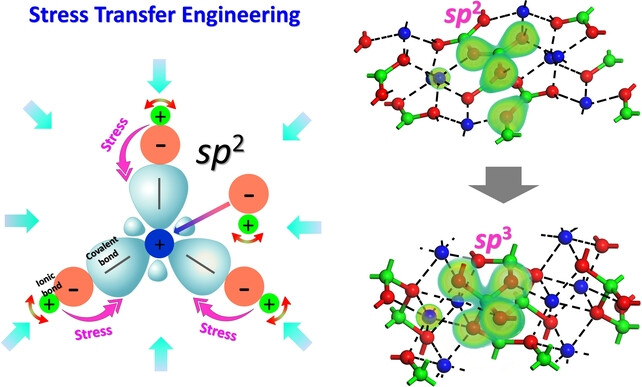
To promote the sp2-to-sp3 hybridization transformation in ionic crystals, the realization of internal-lattice stress-transfer from ionic groups to covalent groups is proposed. It is demonstrated in a crystal of LiBO2 which undergoes the transformation at unprecedentedly low pressure of only 2.85 GPa.
Fluorescence
A Versatile Strategy for Multi-Stimuli-Responsive Fluorescent Material Based on Cross-Linking-Induced Emission: Applications in Encryption
- First Published: 09 September 2022
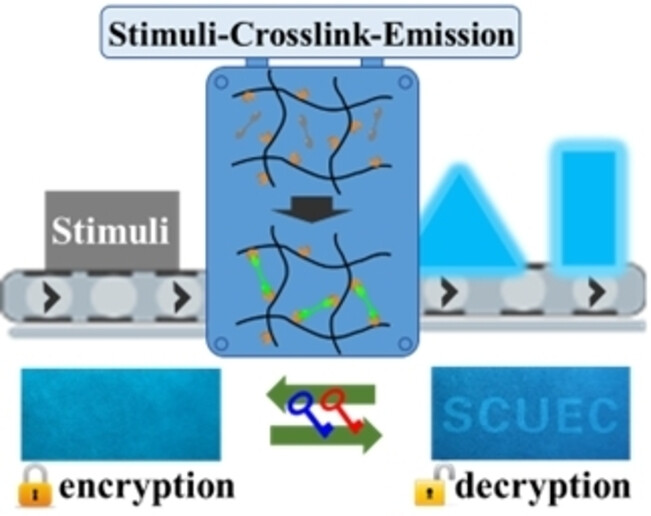
An adaptable strategy toward a multi-stimuli-responsive fluorescent material with stage-by-stage responsive behavior was developed. This strategy ensures the compatibility of different stimuli-responses and the adjustability of stimulus-response behavioral logic. These multi-stimuli-responsive fluorescent materials exhibited strong accessibility and adaptability for information encryption.
Water Harvesting
Simultaneously Enhanced Hydrophilicity and Stability of a Metal-Organic Framework via Post-Synthetic Modification for Water Vapor Sorption/Desorption
- First Published: 05 August 2022
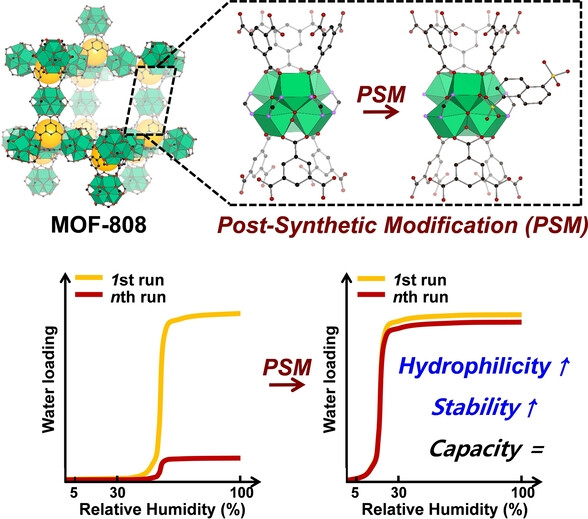
Metal-organic frameworks (MOFs) with large pores often lack sufficient hydrophilicity and stability. A post-synthetic modification of MOF-808 with di-sulfonic acids simultaneously enhances its hydrophilicity and stability while maintaining the high water-sorption capacity, achieving high swing capacities practical for potential applications, such as water harvesting and adsorptive heat transformations.
Nanomedicine | Hot Paper
Conferring BiVO4 Nanorods with Oxygen Vacancies to Realize Enhanced Sonodynamic Cancer Therapy
- First Published: 08 September 2022
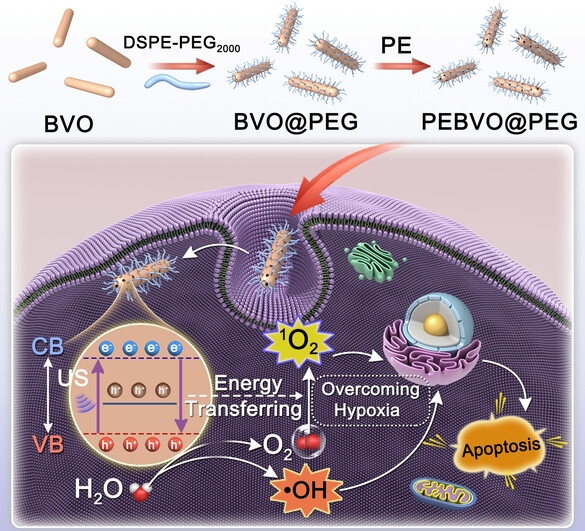
Photoetching can confer BiVO4 with oxygen vacancies and enhance the catalytic performance of BiVO4. The photoetched BiVO4 can catalyze water splitting to generate oxygen and hydroxyl radicals under the mediation of ultrasound. The generated oxygen can relieve tumor hypoxia, thereby improving the sonodynamic cancer therapy performance of BiVO4.
Nanopores
3D Blockage Mapping for Identifying Familial Point Mutations in Single Amyloid-β Peptides with a Nanopore
- First Published: 09 September 2022
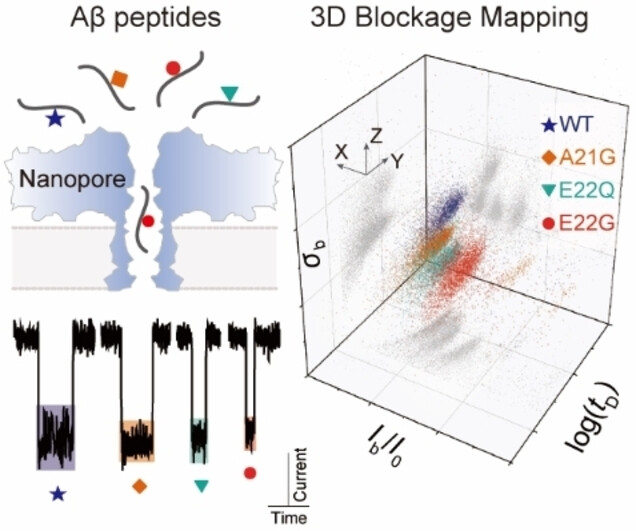
Three types of single-point mutants of Amyloid-β peptide associated with familial Alzheimer's disease were simultaneously identified with aerolysin nanopores assisted by a 3D blockage mapping strategy. This is based on the combination of the conventional current blockage (Ib/I0), duration time (tD) and the reliable standard deviation of current blockade fluctuations (σb).
2D Silver Coordination Polymers
Ultrastable Anti-Acid “Shield” in Layered Silver Coordination Polymers
- First Published: 06 September 2022

Acid resistance (12 M HCl) was made possible for two isomorphic two-dimensional silver-based coordination polymers. Protection is provided by a hydrophobic organic shell and a dynamic proton buffer layer via a thiolate-thione tautomerism of 2-thiobenzimidazole ligands. Thus, these ligands are promising surface inhibitors, acting as a dual protective shield against metal corrosion.
Surface Chemistry
Conservation of Nickel Ion Single-Active Site Character in a Bottom-Up Constructed π-Conjugated Molecular Network
- First Published: 07 September 2022
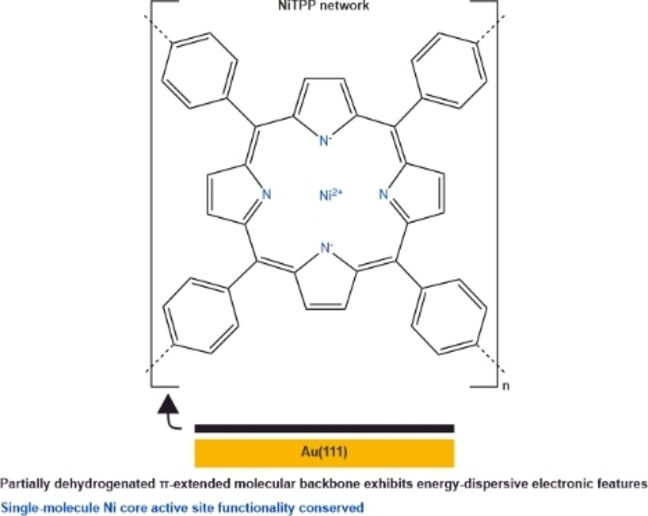
The on-surface synthesis of covalent nickel tetraphenylporphyrin network on Au(111) is studied by a multitechnique approach combining local microscopic insights with space-averaging synchrotron radiation-based methods. Even though the porphyrin nanomesh is not perfectly ordered extending the π-system results in the appearance of energy-dispersive electronic features while the Ni cores remain in the characteristic single-molecule configuration.
Covalent Organic Frameworks
2,4,6-Trimethylpyridine-Derived Vinylene-Linked Covalent Organic Frameworks for Confined Catalytic Esterification
- First Published: 13 September 2022

Knoevenagel condensation at the methyl groups of a 2,4,6-trimethylpyridine monomer was promoted by in situ acylation of the nitrogen atom, yielding highly crystalline vinylene-linked covalent organic frameworks. The resultant Lewis basic, pyridine-decorated, regular, nanoporous structures catalyzed spatially confined organic esterification with good selectivity.
Mechanochemistry
Temperature-Controlled Mechanochemistry for the Nickel-Catalyzed Suzuki–Miyaura-Type Coupling of Aryl Sulfamates via Ball Milling and Twin-Screw Extrusion.
- First Published: 09 September 2022
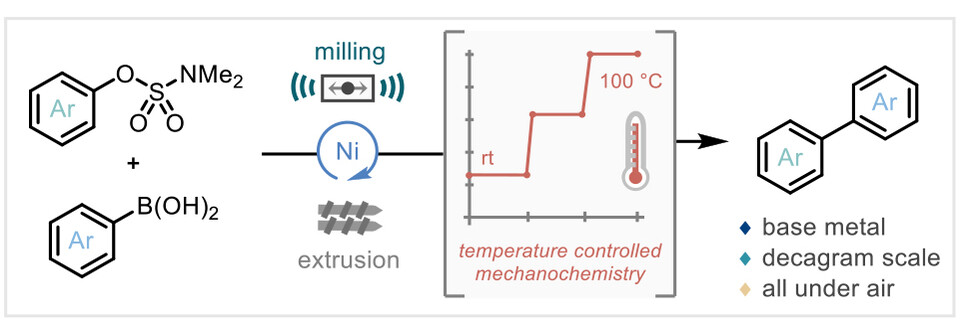
The nickel catalyzed Suzuki–Miyaura-type coupling of aryl sulfamates and boronic acid derivatives enabled by temperature-controlled mechanochemistry via the development of a programmable PID-controlled jar heater is reported. This base-metal-catalyzed, solvent-free, all-under-air protocol was also scaled 200-fold using twin-screw extrusion technology affording decagram quantities of material.
Nanostructures
Polymerisation-Induced Self-Assembly of Graft Copolymers
- First Published: 24 August 2022
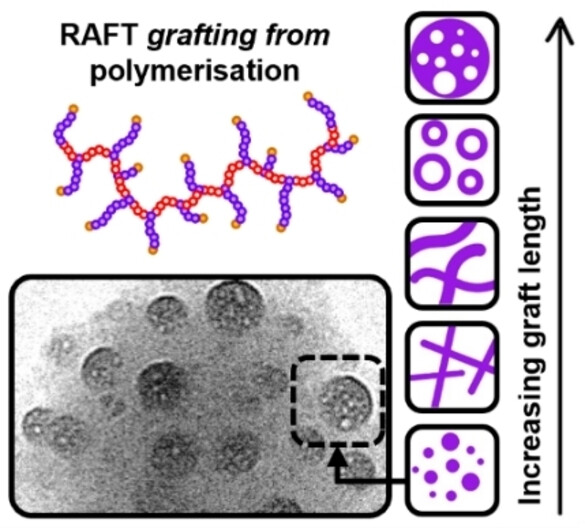
The influence of branching on polymer self-assembly is investigated by conducting polymerisation-induced self-assembly of sparsely grafted poly(lauryl methacrylate)-graft-poly(benzyl methacrylate) in n-dodecane. Electron microscopy and X-ray scattering techniques are used to characterise the resulting materials.
Supramolecular Chemistry | Hot Paper
Peptide Self-Assembly
Intranuclear Nanoribbons for Selective Killing of Osteosarcoma Cells
- First Published: 14 September 2022
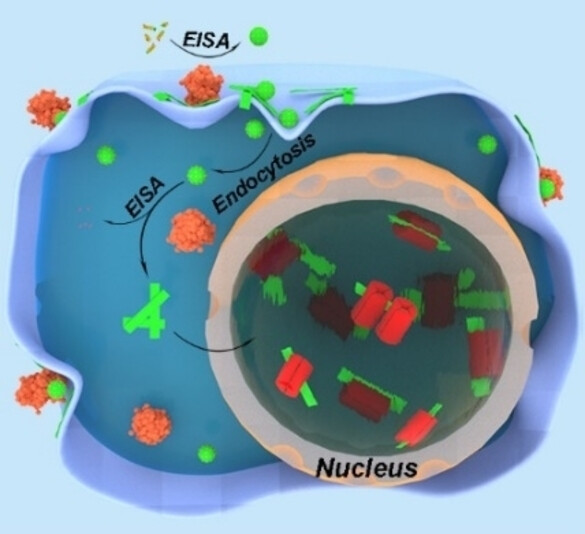
Upon the dephosphorylation of ALP, the leucine-rich phosphopeptides self-assemble into micelles and then convert into nanoribbons. The phosphopeptides/assemblies first aggregate on the cell membrane of osteosarcoma cells, and then enter cells via endocytosis, disrupt the nuclear membrane, and finally accumulate in nuclei by interaction with histone proteins to induce cell death.
Hybrid Electrolytes
Semi-Solid Superprotonic Supramolecular Polymer Electrolytes Based on Deep Eutectic Solvents and Polyoxometalates
- First Published: 15 September 2022
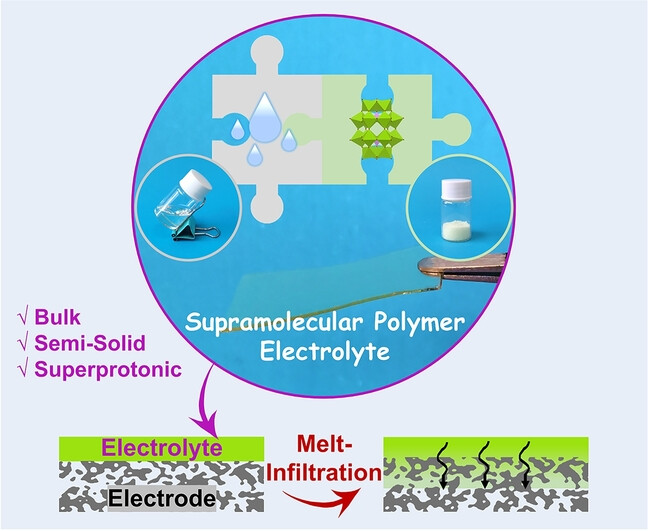
Polyoxometalate nanoclusters are used as supramolecular cross-linkers to solidify deep eutectic solvents, which creates semi-solid supramolecular polymer electrolytes with superprotonic conductivity. Upon mild heating, these electrolytes can infiltrate into the voids in supercapacitor electrodes, form highly stable interfaces, and lead to improved electrochemical performance.
Photocatalytic Water Splitting
Piezo-Photocatalytic Synergy in BiFeO3@COF Z-Scheme Heterostructures for High-Efficiency Overall Water Splitting
- First Published: 13 September 2022
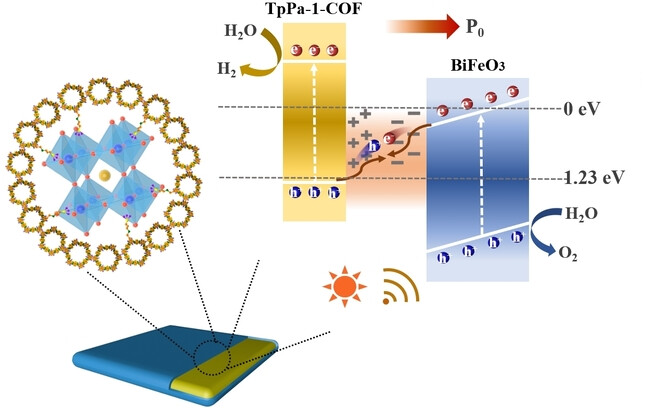
We combined covalent organic frameworks (COFs) and piezoelectric material by covalent bonds to form a Z-scheme core@shell heterostructure piezo-photocatalyst with tunable shell thickness for overall water splitting. The optimal sample reveals the unprecedented H2 and O2 production rates of 1416.4 and 708.2 μmol h−1 g−1 under the excitation of ultrasonication coupled with visible light irradiation.
Chiral Plasmonics
Unraveling the Complex Chirality Evolution in DNA-Assembled High-Order, Hybrid Chiroplasmonic Superstructures from Multi-Scale Chirality Mechanisms
- First Published: 09 September 2022
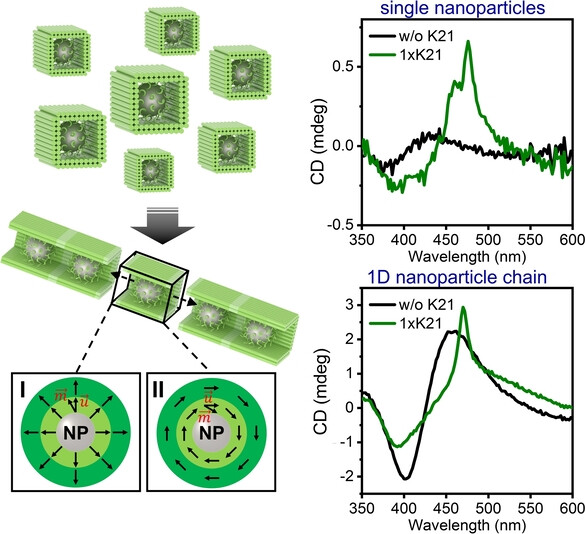
Multi-scale chirality evolution was observed from DNA-assembled hybrid chiroplasmonic superstructures comprised of metal nanoparticles and organic chromophores, as a result of distinct fundamental chiral interactions at different hierarchical levels. The findings present new challenges to current theoretical frameworks to describe chiral hybrid systems, and will motivate computational and theoretical advances.
Ferroelectrics
The First Chiro-Inositol Organosilicon Ferroelectric Crystal
- First Published: 14 September 2022
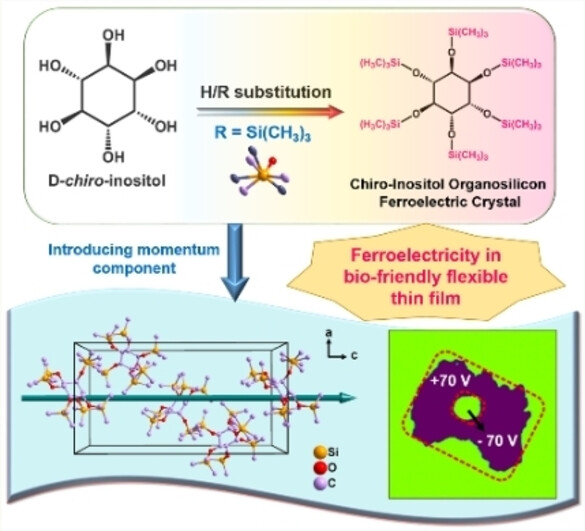
A one-component organosilicon ferroelectric D-chiro-inositol-SiMe3 is designed by using the chemical strategy of introducing quasi-spherical [-Si(CH3)3] groups into D-chiro-inositol. It exhibits stable and electrically switchable spontaneous polarization on the thin film, which has extremely low hardness of 72.8 MPa and small elastic modulus of 5.04 GPa.
Fused-Ring Systems | Hot Paper
Bottom-Up Preparation of Twisted Graphene Nanoribbons by Cu-Catalyzed Deoxygenative Coupling
- First Published: 13 September 2022
Zn-Ion Batteries | Very Important Paper
Anion-Trap Engineering toward Remarkable Crystallographic Reorientation and Efficient Cation Migration of Zn Ion Batteries
- First Published: 29 August 2022
Single-Atom Nanozymes | Hot Paper
CO2 Utilization
Ti-doped CeO2 Stabilized Single-Atom Rhodium Catalyst for Selective and Stable CO2 Hydrogenation to Ethanol
- First Published: 09 September 2022
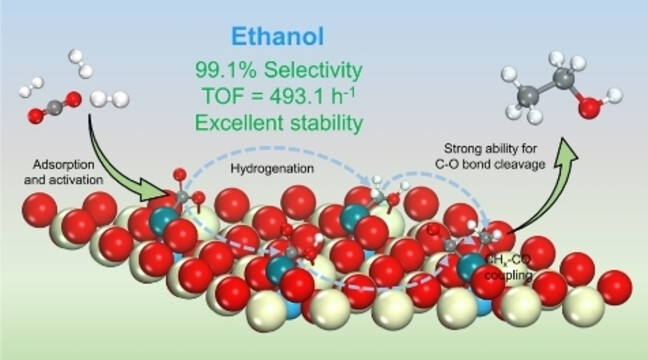
We constructed single-atom Rh embedded on Ti-doped CeO2, which exhibited record-breaking TOF of 493.1 h−1, 99.1 % ethanol selectivity and outstanding stability in CO2 hydrogenation. Synergistic effects of Ti-doping and single-atom Rh favor CHx*/CO* formation and their subsequent coupling into ethanol. Ti-doping-induced crystal reconstruction leads to the stabilization of single-atom Rh site and catalytic stability.
Photothermal Therapy | Hot Paper
Unique Double Intramolecular and Intermolecular Exciton Coupling in Ethene-Bridged aza-BODIPY Dimers for High-Efficiency Near-Infrared Photothermal Conversion and Therapy
- First Published: 13 September 2022
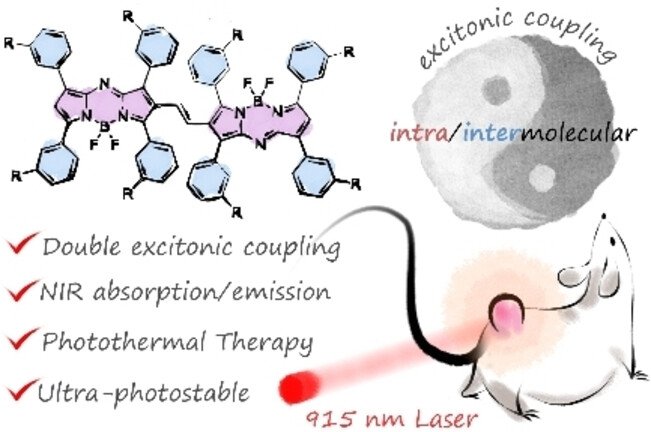
An aza-BODIPY dimer exhibits unique double intra- and intermolecular exciton couplings, resulting in a dramatic red-shift of the absorption to the second near-infrared (NIR-II) region. Its self-assembled nanoparticles have high photothermal conversion ability and are ultra-photostable, which can efficiently lead to complete tumor ablation under 915 nm laser irradiation with ultralow power density.
Renewable Resources | Very Important Paper
In Vivo Olefin Metathesis in Microalgae Upgrades Lipids to Building Blocks for Polymers and Chemicals
- First Published: 05 September 2022
DNA Nanotechnology
Programmable Assembly of Multivalent DNA-Protein Superstructures for Tumor Imaging and Targeted Therapy
- First Published: 09 September 2022
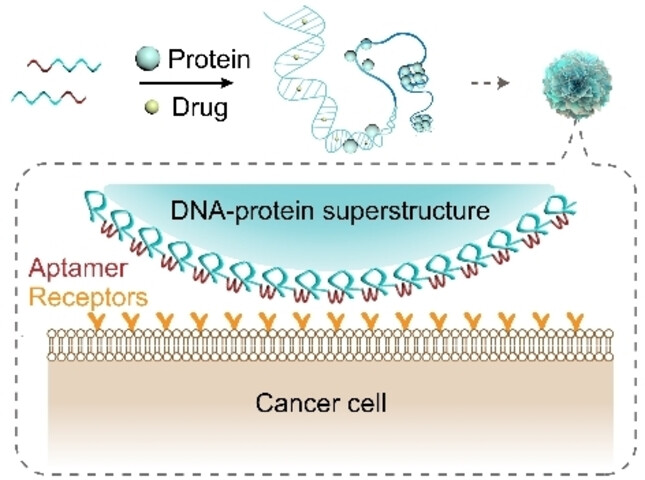
Programmable multivalent DNA nanomaterials are designed through the biomimetic assembly of DNA with Food and Drug Administration-approved protamine, providing biocompatible and stable drug carriers with high avidity in a simpler method. This practical approach achieves sensitive tumor imaging and targeted cancer therapy, and offers new clinical translation opportunities.
Imaging Agents | Very Important Paper
Activity-based Photoacoustic Probes Reveal Elevated Intestinal MGL and FAAH Activity in a Murine Model of Obesity
- First Published: 09 September 2022
Asymmetric Catalysis | Very Important Paper
Enantioselective [2+2] Cycloaddition of Allenyl Imide with Mono- or Disubstituted Alkenes
- First Published: 13 September 2022
![Enantioselective [2+2] Cycloaddition of Allenyl Imide with Mono- or Disubstituted Alkenes](/cms/asset/78cc79bc-b37a-4b44-b317-d39b9d8a99b5/anie202211596-toc-0001-m.jpg)
An efficient catalytic asymmetric [2+2] cycloaddition reaction of allenyl imide and alkenes was achieved by utilizing chiral N,N′-dioxide-magnesium(II) complex as the catalyst. This protocol provided a series of axially chiral cyclobutenes in high yields with excellent enantioselectivities. A stepwise mechanism was proposed based on experimental studies and DFT calculations and π–π stacking interaction was crucial for the enantioselectivity.
Coordination Chemistry
The Continuum Between Hexagonal Planar and Trigonal Planar Geometries
- First Published: 12 September 2022
Dynamic Polymer Networks | Hot Paper
Dynamic AIE crosslinks in liquid crystal networks: visualizing for actuation-guiding, re-bonding for actuation-altering
- First Published: 15 September 2022

Novel covalent adaptable liquid crystal network (CALCN) actuators crosslinked by dynamic AIE luminogens were built based on Diels–Alder chemistry. This all-in-one material design “visualizes”, through fluorescing, the crosslinking state and actuation capability for actuation-guiding in CALCN, while enabling network “re-bonding” through associative and dissociative exchange mechanisms for unprecedented actuation-reprogrammability.
Perovskites
Bifunctional Catalysis | Hot Paper
A Bifunctional CdS/MoO2/MoS2 Catalyst Enhances Photocatalytic H2 Evolution and Pyruvic Acid Synthesis
- First Published: 10 September 2022
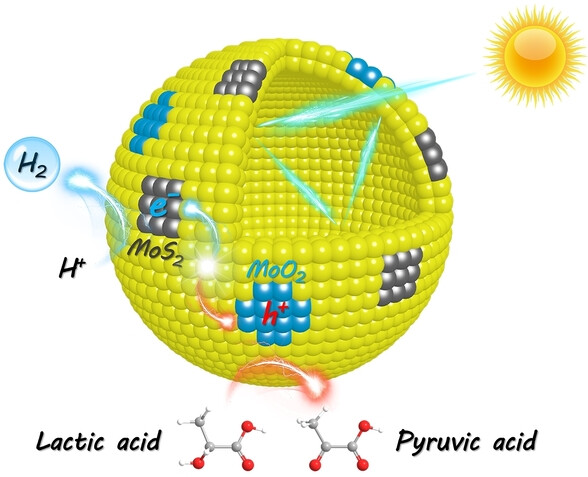
Photogenerated electrons and holes in CdS hollow spheres loaded with MoS2 and MoO2 dual cocatalysts are applied to hydrogen evolution and selective pyruvic acid production, respectively. This bifunctional strategy can fully utilize the redox abilities of photogenerated electrons and holes to enhance photocatalytic activity.
NLO Materials
The Microscopic Origin of Second Harmonic Generation Response: The Spatial Structure of Instantaneous Dipole Moments in Electron Excitation
- First Published: 09 September 2022
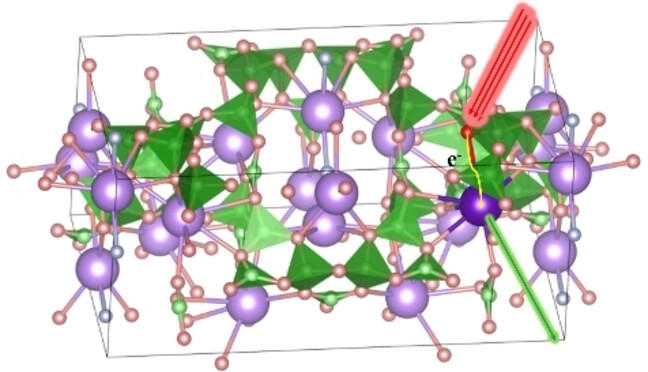
In the NLO materials reported herein, an electron transits from the oxygen atom of the valence state to the barium atom of the conduction state caused by the optical excitation. The charge transition generates instantaneous spatial dipole moments, which contribute to the projected SHG. Depending on the arrangement and ambience of the dipole moments, all microscopic SHG integrate into the macroscopic SHG response.
Lithium–Sulfur Batteries
Synergistic Interfacial Bonding in Reduced Graphene Oxide Fiber Cathodes Containing Polypyrrole@sulfur Nanospheres for Flexible Energy Storage
- First Published: 08 September 2022
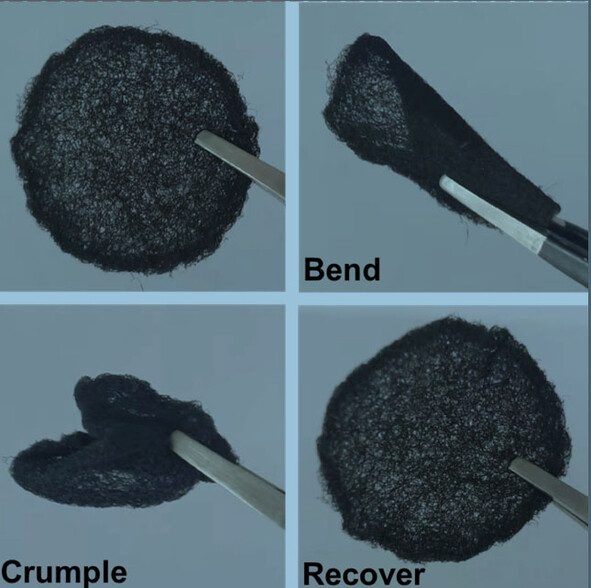
We report a synergistic interface bonding strategy to construct novel flexible fiber-shaped composite cathodes, in which polypyrrole@sulfur (PPy@S) nanospheres (≈500 nm) are homogeneously implanted into the built-in cavity of self-assembled reduced graphene oxide fibers (rGOFs) by a facile microfluidic assembly method. The PPy@S/rGOFs cathode exhibits good mechanical property, excellent electronic conductivity and enhanced cycling performance and outstanding high-rate capacity.
Radical Reactions
Regioselective Access to Vicinal Diamines by Metal-Free Photosensitized Amidylimination of Alkenes with Oxime Esters
- First Published: 09 September 2022

A metal-free, photosensitized regioselective diamination of alkene is reported. The keys to this advance are: 1) rational design of bifunctional diamination reagent, 2) simultaneous generation of long-lived iminyl radical and transient amidyl radical with significantly differed reactivities, and 3) involvement of photoinduced energy transfer reaction mode.
Host-Guest Systems | Hot Paper
Pseudo-heterolepticity in Low-Symmetry Metal-Organic Cages
- First Published: 08 September 2022
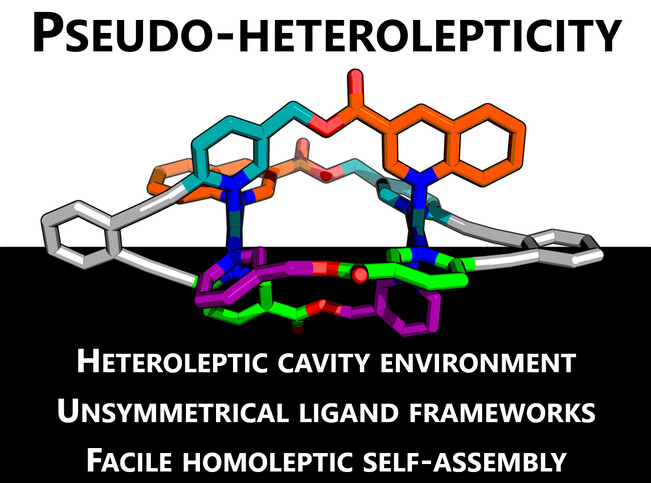
Heteroleptic metal-organic cages are prized for their structural complexity and multi-functionality. Controlling integrative self-sorting processes necessary to achieve defined self-assembly of these supramolecular hosts is a significant design challenge. In this work, ligand-tethering strategies are described that allow access to metal-organic cages with highly anisotropic cavities described by two inequivalent, unsymmetrical ligand scaffolds.
Fluorescent Probes | Very Important Paper
Tracking Hepatic Ischemia-Reperfusion Injury in Real Time with a Reversible NIR-IIb Fluorescent Redox Probe
- First Published: 19 September 2022
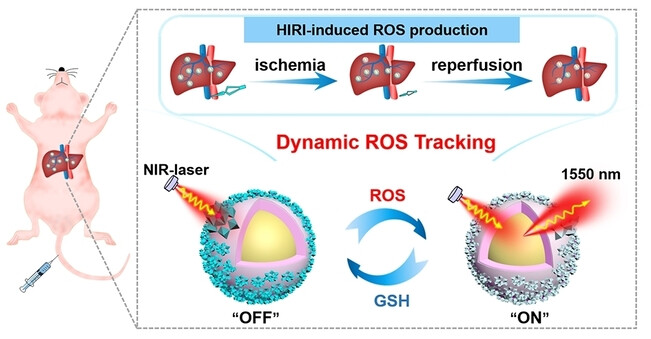
A reversible fluorescent redox probe with emission beyond 1500 nm was synthesized to dynamically monitor the time-resolved reactive oxygen species (ROS) fluctuations during hepatic ischemia-reperfusion injury (HIRI) in vivo. The strategy not only circumvents the difficulty in building reversible fluorescent probes in the NIR-II region but also offers a useful tool for early diagnosis and timely treatment of HIRI.
Aqueous Zinc Batteries
Regulating Surface Reaction Kinetics through Ligand Field Effects for Fast and Reversible Aqueous Zinc Batteries
- First Published: 09 September 2022

The boron acid additive can alleviate the intrinsic tradeoff between Zn nucleation/dissolution kinetics and the interfacial hydrogen evolution reaction by modulating the solvation sheath. The formed solvation structure with moderate ligand field strength enables fast and highly reversible Zn deposition.
Main Group Elements
Facile Route to Novel Diazaphosphinine-Based Polycyclic Aromatic Hydrocarbons
- First Published: 15 September 2022

The first example of diazaphosphinine polycyclic aromatic hydrocarbons (DP-PAHs) is reported. The electronic structures and optoelectronic properties are highly tunable via the rich phosphorus chemistry. With balanced S1 and T1 emission, DP-PAH with P=S center exhibits a single-molecule white-light emitting character in the crystalline state.
Host-Guest Systems
Generation of Tunable Ultrastrong White-Light Emission by Activation of a Solid Supramolecule through Bromonaphthylpyridinium Polymerization
- First Published: 12 September 2022

A solid supramolecule based on a sulfobutylether-β-cyclodextrin and diarylethene derivative has been developed by a bromonaphthylpyridinium polymerization strategy. The supramolecule exhibits tunable phosphorescence emission in the amorphous state and can be applied for stimuli-responsive data encryption and anti-counterfeiting.
Foldamers | Very Important Paper
Differential Peptide Multi-Macrocyclizations at the Surface of a Helical Foldamer Template
- First Published: 22 August 2022
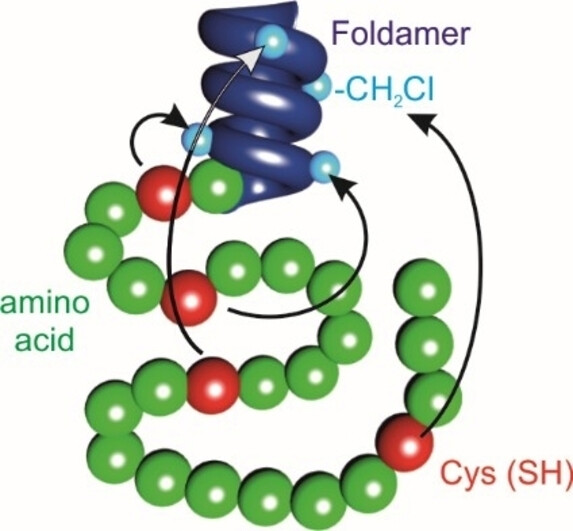
The selective formation of different macrocycles can be implemented using Cys residues within a peptide and chloroacetamides at the surface of a foldamer helix by placing the latter at precise locations. Helix rigidity and faster formation of smaller macrocycles make the favored product largely predictable.
Communications
Neurochemistry | Hot Paper
Fast-Scan Cyclic Voltammetry (FSCV) Reveals Behaviorally Evoked Dopamine Release by Sugar Feeding in the Adult Drosophila Mushroom Body
- First Published: 21 August 2022
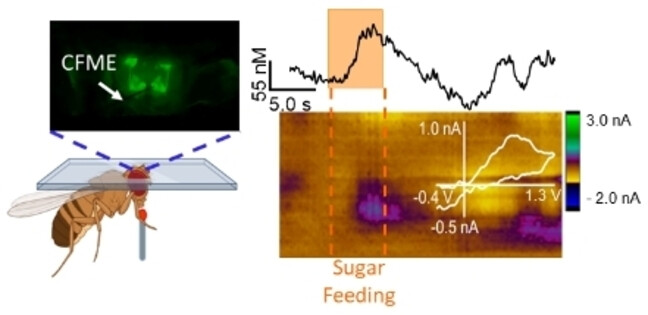
In vivo fast-scan cyclic voltammetry was developed to measure behaviorally evoked dopamine release in the mushroom body of adult Drosophila melanogaster during sugar feeding. Sugar feeding stimulated robust dopamine release and its release was pharmacologically characterized. Dopamine release was increased after applying flupentixol and nisoxetine, demonstrating D2 receptors and dopamine transporters mediate sugar-evoked dopamine signaling.
Mass Spectrometry | Hot Paper
Rapid and Economical Chemoselective Metabolomics Using Boronate Ester Formation on a Monolithic Substrate
- First Published: 03 August 2022
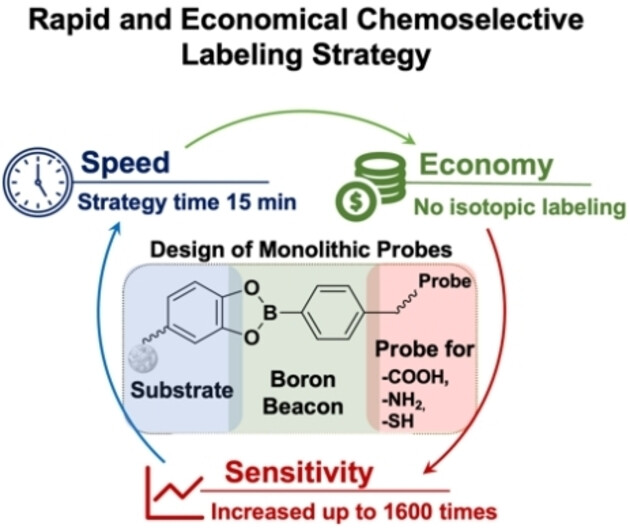
A rapid and economical chemoselective labeling strategy was established involving a boronate ester reaction on a monolithic substrate. Only 15 minutes is required to complete the strategy and boron allows for recognition of labeled metabolites with no need for expensive additional isotopic encoding. The sensitivity was enhanced up to 1 600 times compared with non-labeled liquid chromatography–mass spectrometry methods.
Molecular Junctions
Bi-polaron Transport and Magnetic Field Induced Pauli Spin Blockade in Redox-Active Molecular Junctions
- First Published: 13 September 2022
Supramolecular Chemistry | Hot Paper
Dramatically Enhanced Reactivity of Fullerenes and Tetrazine towards the Inverse-Electron-Demand Diels–Alder Reaction inside a Porous Porphyrinic Cage
- First Published: 14 September 2022
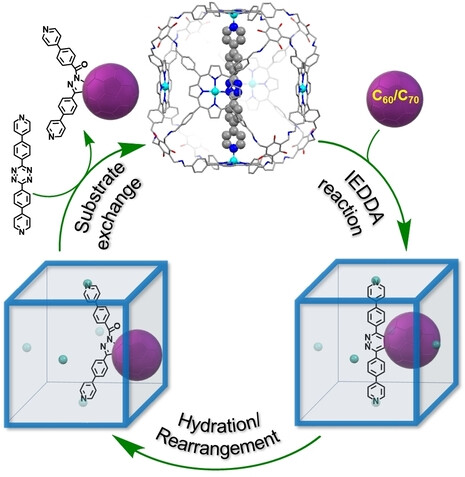
Herein, we report a dramatic enhancement in the reactivity of fullerenes (C60/C70)-tetrazine reaction inside a porous Zn-porphyrinic cage (Zn-PB) under sustainable conditions. Moreover, hydration-induced rearrangement of C60-LA inside Zn-PB facilitates its release from the Zn-PB cavity, thus enabling Zn-PB to catalyze fullerene-pyrazoline adduct formation without product inhibition.
Surface Chemistry
Substrate Tumbling in a Chemisorbed Diastereomeric α-Ketoester/1-(1-Naphthyl)ethylamine Complex
- First Published: 10 September 2022
Metathesis Reactions
Silicon Catalyzed C−O Bond Ring Closing Metathesis of Polyethers
- First Published: 15 September 2022

The Lewis superacid bis(perchlorocatecholato)silane is applied in the selective catalytic C−O ring-closing metathesis of challenging oligo- and polyethers, enabling upcycling of polyethylene glycol. Based on detailed investigations of the reaction mechanism by DFT calculations, an improved second-generation silicon-based Lewis superacid is developed.
Zinc Batteries
Dual-Network Structured Hydrogel Electrolytes Engaged Solid-State Rechargeable Zn-Air/Iodide Hybrid Batteries
- First Published: 12 September 2022
Atropisomers
Enantioselective Synthesis of N−N Bisindole Atropisomers
- First Published: 14 September 2022

An enantioselective synthesis of N−N bisindole atropisomers based on the de novo construction of one indole skeleton is presented. A wide variety of N−N axially chiral bisindoles were obtained in good yields with excellent enantioselectivities. Structurally diverse indole-pyrrole, indole-carbazole and non-biaryl-indole atropisomers possessing a chiral N−N axis were accessed using this protocol.
Photocatalysis | Hot Paper
Photocatalyzed Cascade Reactions of Cyclopropanols and α-Trifluoromethyl-Substituted Olefins for the Synthesis of Fused gem-Difluorooxetanes
- First Published: 16 September 2022
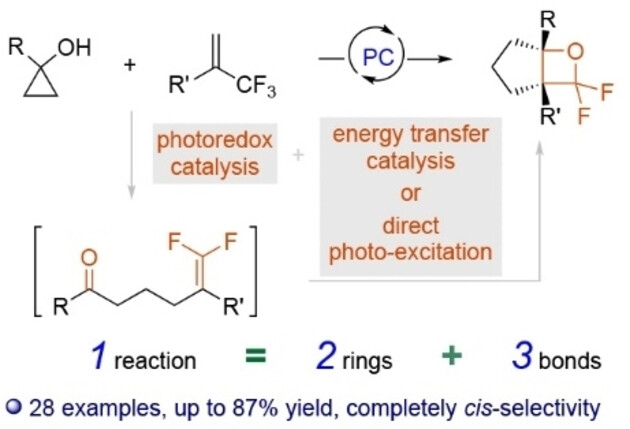
A combination of photoredox catalysis and energy transfer catalysis/direct photo-excitation enables cascade reactions of cyclopropanols and α-CF3-olefins, in which two rings and three bonds are constructed in one reaction, affording fused gem-difluorooxetanes. The reaction shows broad substrate scope, complete cis-selectivity, and downstream transformations of the products demonstrated the synthetic potential.
Molecular Logic
Optically Controlled Thermochromic Switching for Multi-Input Molecular Logic
- First Published: 14 September 2022
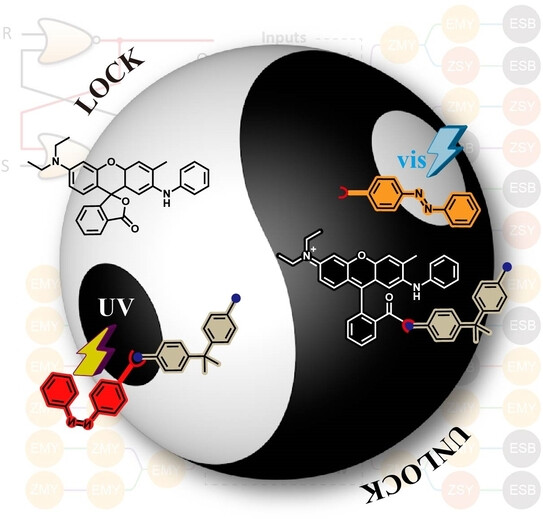
We ideally design azobenzenes with alkyl chains (AZO(n)) as a photo trigger in the leuco dye based thermochromic system. The color developer in this system can be reversibly locked by Z-AZO(n), so that the leuco dye cannot capture the proton from the color developer to form the larger conjugate structure, while it can be released upon Z-to-E photoisomerization. This new strategy can be considered as a possible multi-input molecular logic system.
CO2 Reduction
Heteroatoms Induce Localization of the Electric Field and Promote a Wide Potential-Window Selectivity Towards CO in the CO2 Electroreduction
- First Published: 08 September 2022
Self-Assembly
Redox-Regulated Conformational Change of Disulfide-Rich Assembling Peptides
- First Published: 15 September 2022
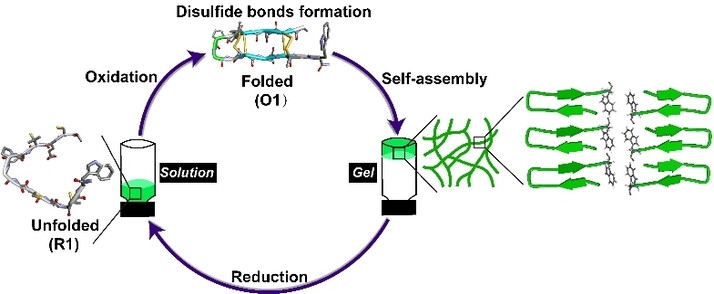
Disulfide bond formation is usually used in nature for the regulation and stabilization of protein conformations. This principle has now been expanded to control the conformational change of thiol-rich peptides into an amphiphilic β-hairpin conformation, which undergoes a subsequent self-assembly to form a mechanically rigid hydrogel. Such a stimuli-responsive feature allows the biomedical application of such peptides.
Organic Electrosynthesis | Hot Paper
Scalable Electrosynthesis of Formamide through C−N Coupling at the Industrially Relevant Current Density of 120 mA cm−2
- First Published: 15 September 2022

Boron-doped diamond catalyst is adopted for electrooxidation synthesis of formamide from methanol and ammonia with high activity and durability. A scale-up 8 L electrolyzer with an external renewable power supply for the production of formamide is designed to enable its scalable production (FE: 33.5 %, output: 36.9 g h−1), which shows the potential for the large-scale electrosynthesis of formamide.




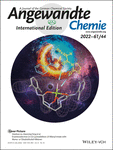


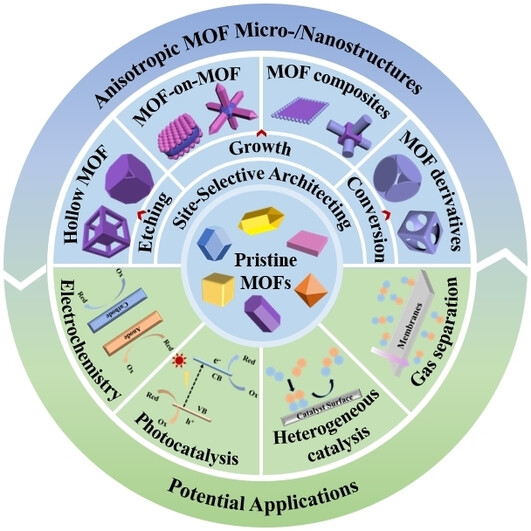
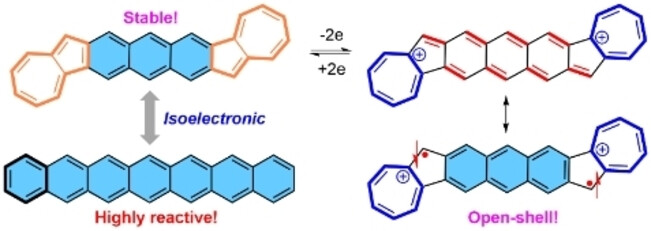

![Multistate Circularly Polarized Luminescence Switching through Stimuli-Induced Co-Conformation Regulations of Pyrene-Functionalized Topologically Chiral [2]Catenane](/cms/asset/978e506b-82aa-4d82-8034-790d88428e18/anie202210542-toc-0001-m.jpg)

